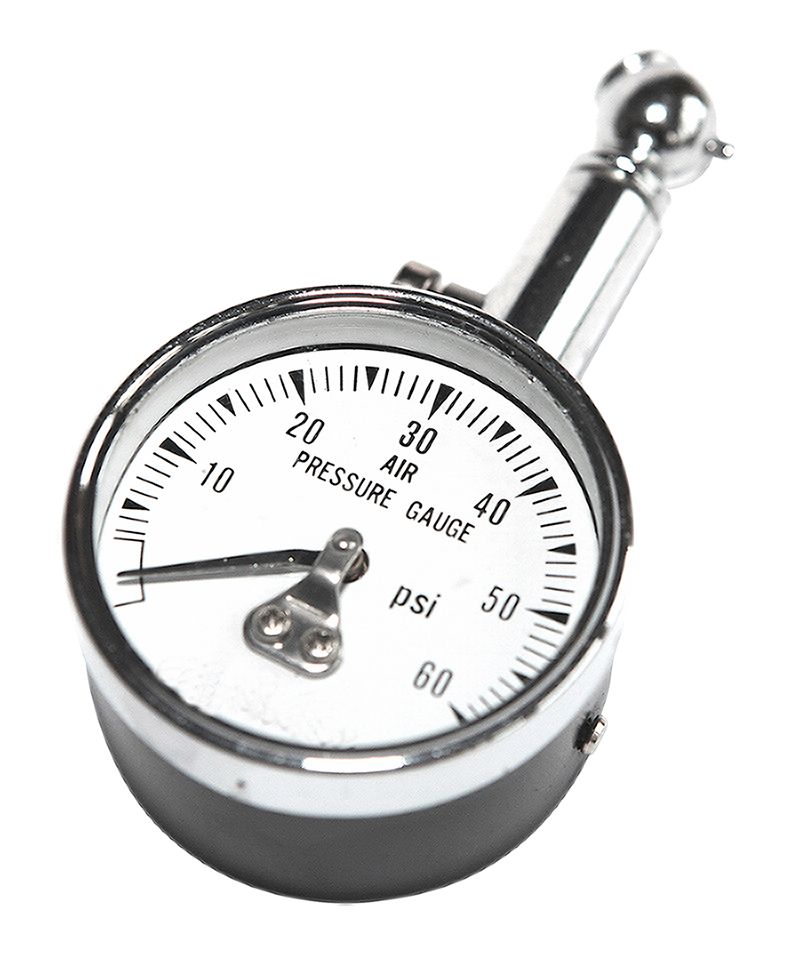Tire Pressure

Tires work better under proper pressure.
Tire pressure is the way to measure the amount of air in your tires. Vehicle manufacturers set the tire pressure specification for every vehicle.
Why do you need a way to measure tire pressure? Tires can lose 1 psi of inflation pressure per month under normal driving conditions. Additionally, tires can lose an extra 1 psi for every 10 degrees of ambient temperature change. It's important to have your tire pressure checked at least once a month to avoid issues stemming from low tire pressure. (We can take care of this for free at your local Hibdon Tires Plus!)
Why is tire pressure important?
Maintaining the right air pressure in your tires can help your tires last longer, give you better and safer handling of your vehicle, and even help improve fuel efficiency!
“You can improve your gas mileage by 0.6% on average—up to 3% in some cases—by keeping your tires inflated to the proper pressure,” according to the U.S. Department of Energy.
Why do tires lose pressure?
While tires are designed to hold air, some air can still leak through the rubber compounds due to a process called osmosis. Though osmosis is ongoing, the process can take quite a while before your tires are flat.
Another culprit in the loss of tire pressure is temperature change. Winter to summer, you can expect tire pressure to go up with the increase in temperatures. Summer to winter, you can expect to see tire pressure drop with a decline in temperature.
Keep in mind that when your tire pressure is checked and adjusted it should be when the tires are “cold”. “Cold” tires have been sitting for 3 or more hours or if driven less than a mile. Tire temperature can change significantly just by driving the vehicle, which means tire pressure can change during while you’re driving and directly after.
How often should you check tire pressure?
As a rule of thumb, check your tires at least once a month, or as often as your vehicle manufacturer recommends with an accurate and reliable pressure gauge. Look in your vehicle owner's manual to find out what the pressure should be. You can also find your recommended tire pressure on the tire placard on your driver's door, glove box door, or fuel door. Additionally, you can use the search below to find your vehicle manufacturer's recommended tire pressure.
What should you do if your tires keep going flat?
There are several reasons your tires may no longer be holding air. The tire could have a puncture or obtrusion, significant cracks in the tread or sidewall due to wear and tear or aging, or it could be a leaky tire valve.
Whatever the cause might be, tires that keep going flat can be pretty annoying! Get relief from your flat tires by scheduling an appointment at an Oklahoma Hibdon Tires Plus near you, and we'll take a look to see what the issue might be. We can investigate any tire damage and repair a leak if it’s repairable. We can also help you get the best tires for your vehicle if it's time for new ones.
This information is compiled from third party sources and is for your informational purposes only. This information is offered on an "as is" basis. Hibdon Tires Plus does not warrant or make any representations regarding the use of or the results of the use of this information. Consult your vehicles owner's manual for further information. This disclaimer is in addition to the hibdontire.com terms and conditions.